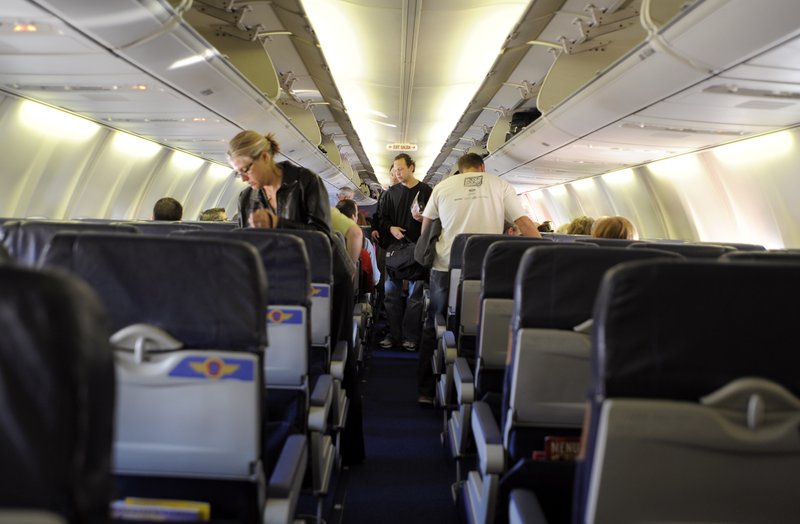This year, over the course of 12 days, 720 volunteers will go through the motions of every air traveler's nightmare: an emergency evacuation.
The testing will take place in November at the Federal Aviation Administration's Civil Aerospace Medical Institute, in Oklahoma City, and authorities will use the results to collect 3,000 data points. They will use that information, as mandated by last year's FAA reauthorization, to determine how small airplane seats can safely get, and how close rows of seats can be to one another. Under federal regulations, planes must be able to be evacuated within 90 seconds.
In a statement, the agency said it was required to "issue regulations to establish minimum dimensions for airplane seat width, length and pitch that are necessary for the safety of passengers." But the statement did not commit to any changes, saying that the FAA planned to finish evacuation testing by the end of the year to "determine what, if any, regulatory changes are necessary to implement the requirement."
That has safety advocates bracing for potentially bad news.
"A bad outcome would be for them to keep the seats essentially as they are or even allow them to shrink further," says Paul Hudson, president of the consumer organization Flyers Rights. "A good outcome would be for them to require the seats and passenger space be sized in order to accommodate the demographic profiles that we now have."
FAA Deputy Administrator Daniel Elwell laid out some details of the testing for members of Congress at a hearing last month. But several people wanted to be sure the tests would include volunteers who resemble the actual traveling public.
"Where are you going to get these people?" asked Rep. Steve Cohen, a Democrat from Tennessee. "You're not going to go to SlimFast, are you?"
Elwell replied: "We're going to try to use a good demographic sampling, and we'll maybe invite you."
Cohen said that would be good, citing his bad leg. He added: "And you've got people in this country who are larger, but you've also got people with disabilities who fly. And you need to have a representative sampling."
Rep. Peter DeFazio, D-Ore., chairman of the House Transportation Committee, said space on planes is shrinking. Some budget carriers offer just 28 inches of pitch, or the distance between the point on one seat and the same point on the one behind it.
"I want to get the CEOs here someday, and I'm going to get some of those seats," he said during the hearing. "And I'm going to put them in them, and we're going to keep them here for four or five hours and see what they think about what they're doing to people."
Ed Coleman, an assistant professor of safety sciences at Embry-Riddle Aeronautical University, said the FAA should study the flying population before doing the tests and base the demographics of its subjects off that. And, he said, those volunteers should not be aware in advance of the evacuation scenarios they'll have to take part in.
Flyers Rights argued in a 2015 petition that average seat pitch had shrunk from 35 inches to 31 inches.
"Nowadays, my knees are in the back of the seat in front of me whenever I get on an airplane," Coleman says. "Am I going to get out in 90 seconds? I have my doubts."
Travel on 10/13/2019
